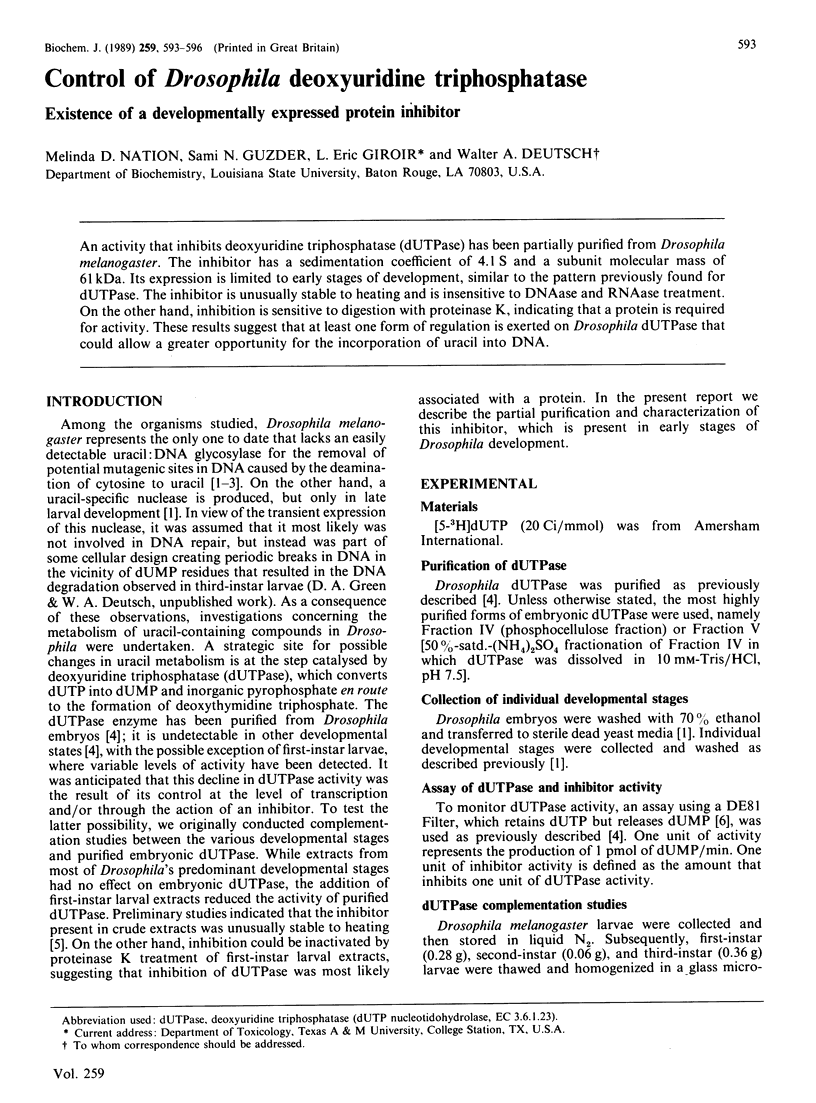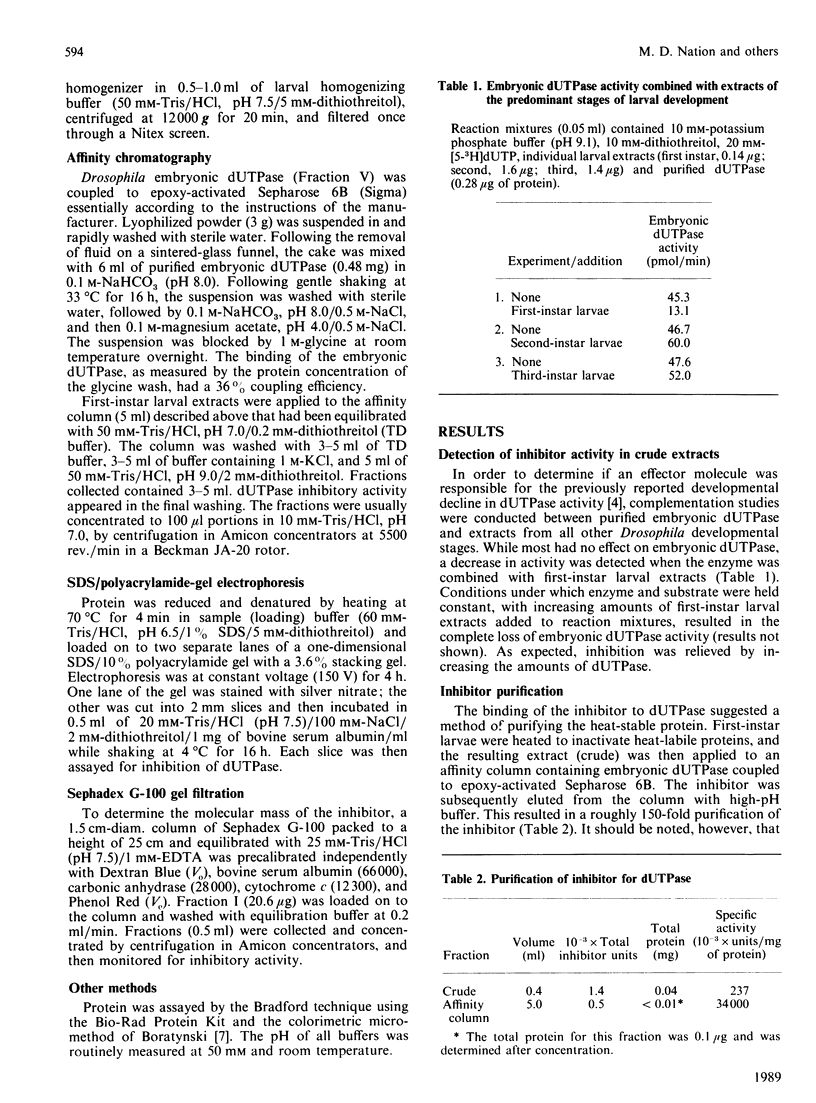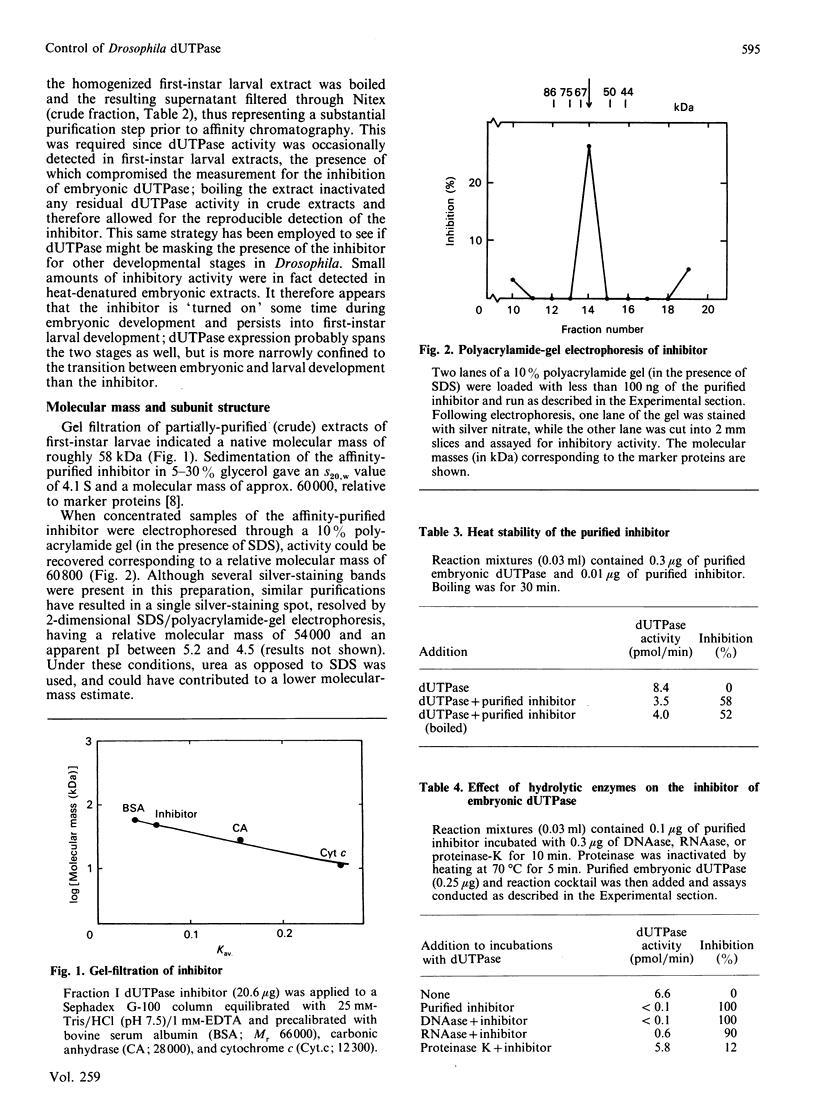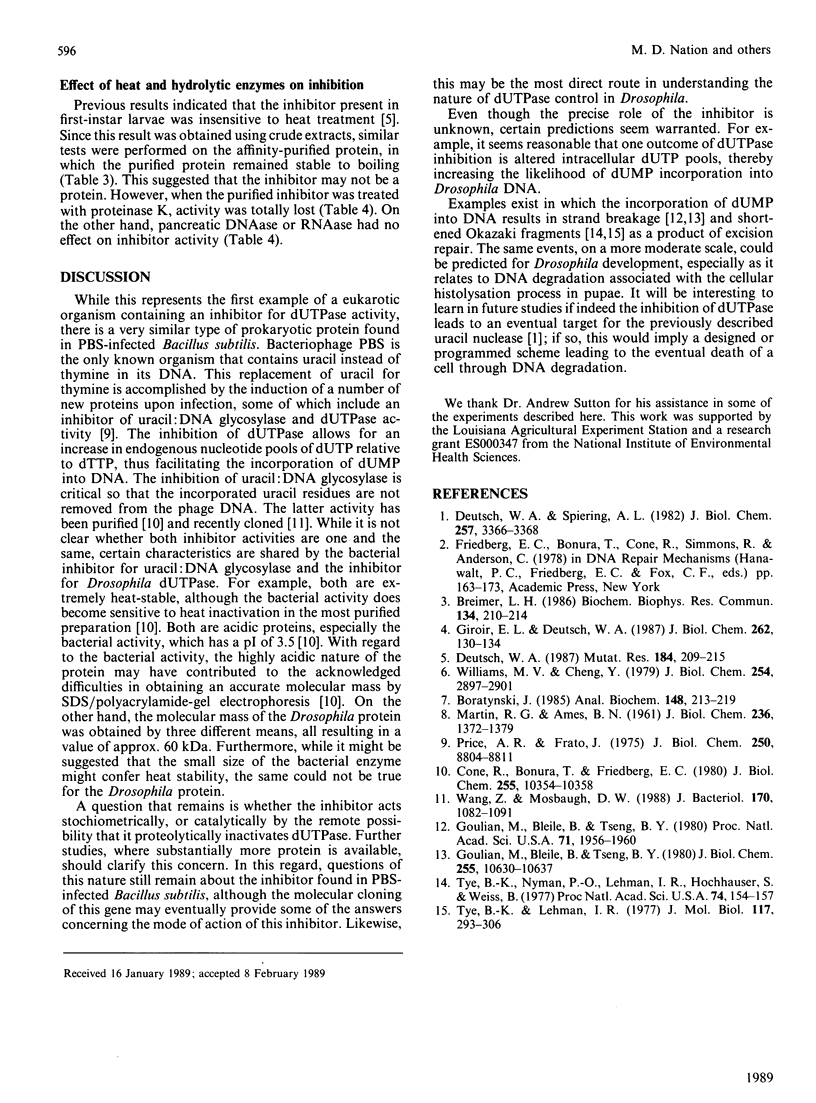Abstract
An activity that inhibits deoxyuridine triphosphatase (dUTPase) has been partially purified from Drosophila melanogaster. The inhibitor has a sedimentation coefficient of 4.1 S and a subunit molecular mass of 61 kDa. Its expression is limited to early stages of development, similar to the pattern previously found for dUTPase. The inhibitor is unusually stable to heating and is insensitive to DNAse and RNAse treatment. On the other hand, inhibition is sensitive to digestion with proteinase K, indicating that a protein is required for activity. These results suggest that at least one form of regulation is exerted on Drosophila dUTPase that could allow a greater opportunity for the incorporation of uracil into DNA.
Full text
PDF



Selected References
These references are in PubMed. This may not be the complete list of references from this article.
- Boratyński J. Colorimetric micromethod for the determination of protein in solutions with silver ions and dithizone. Anal Biochem. 1985 Jul;148(1):213–219. doi: 10.1016/0003-2697(85)90648-7. [DOI] [PubMed] [Google Scholar]
- Cone R., Bonura T., Friedberg E. C. Inhibitor of uracil-DNA glycosylase induced by bacteriophage PBS2. Purification and preliminary characterization. J Biol Chem. 1980 Nov 10;255(21):10354–10358. [PubMed] [Google Scholar]
- Deutsch W. A. Enzymatic studies of DNA repair in Drosophila melanogaster. Mutat Res. 1987 Nov;184(3):209–215. doi: 10.1016/0167-8817(87)90018-6. [DOI] [PubMed] [Google Scholar]
- Deutsch W. A., Spiering A. L. A new pathway expressed during a distinct stage of Drosophila development for the removal of dUMP residues in DNA. J Biol Chem. 1982 Apr 10;257(7):3366–3368. [PubMed] [Google Scholar]
- Giroir L. E., Deutsch W. A. Drosophila deoxyuridine triphosphatase. Purification and characterization. J Biol Chem. 1987 Jan 5;262(1):130–134. [PubMed] [Google Scholar]
- Goulian M., Bleile B., Tseng B. Y. Methotrexate-induced misincorporation of uracil into DNA. Proc Natl Acad Sci U S A. 1980 Apr;77(4):1956–1960. doi: 10.1073/pnas.77.4.1956. [DOI] [PMC free article] [PubMed] [Google Scholar]
- Goulian M., Bleile B., Tseng B. Y. The effect of methotrexate on levels of dUTP in animal cells. J Biol Chem. 1980 Nov 25;255(22):10630–10637. [PubMed] [Google Scholar]
- MARTIN R. G., AMES B. N. A method for determining the sedimentation behavior of enzymes: application to protein mixtures. J Biol Chem. 1961 May;236:1372–1379. [PubMed] [Google Scholar]
- Price A. R., Frato J. Bacillus subtilis deoxyuridinetriphosphatase and its bacteriophage PBS2-induced inhibitor. J Biol Chem. 1975 Nov 25;250(22):8804–8811. [PubMed] [Google Scholar]
- Tye B. K., Lehman I. R. Excision repair of uracil incorporated in DNA as a result of a defect in dUTPase. J Mol Biol. 1977 Dec 5;117(2):293–306. doi: 10.1016/0022-2836(77)90128-0. [DOI] [PubMed] [Google Scholar]
- Tye B. K., Nyman P. O., Lehman I. R., Hochhauser S., Weiss B. Transient accumulation of Okazaki fragments as a result of uracil incorporation into nascent DNA. Proc Natl Acad Sci U S A. 1977 Jan;74(1):154–157. doi: 10.1073/pnas.74.1.154. [DOI] [PMC free article] [PubMed] [Google Scholar]
- Wang Z., Mosbaugh D. W. Uracil-DNA glycosylase inhibitor of bacteriophage PBS2: cloning and effects of expression of the inhibitor gene in Escherichia coli. J Bacteriol. 1988 Mar;170(3):1082–1091. doi: 10.1128/jb.170.3.1082-1091.1988. [DOI] [PMC free article] [PubMed] [Google Scholar]
- Williams M. V., Cheng Y. Human deoxyuridine triphosphate nucleotidohydrolase. Purification and characterization of the deoxyuridine triphosphate nucleotidohydrolase from acute lymphocytic leukemia. J Biol Chem. 1979 Apr 25;254(8):2897–2901. [PubMed] [Google Scholar]


